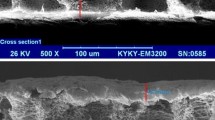Abstract
Biological treatment is an emerging and prevalent technology for treating off-gases from wastewater treatment plants. The most commonly reported odorous compound in off-gases is hydrogen sulfide (H2S), which has a very low odor threshold. A self-designed, bench-scale, cross-flow horizontal biotrickling filter (HBF) operated with bacteria immobilized activated carbon (termed biological activated carbon—BAC), was applied for the treatment of H2S. A mixed culture of sulfide-oxidizing bacteria dominated by Acidithiobacillus thiooxidans acclimated from activated sludge was used as bacterial seed and the biofilm was developed by culturing the bacteria in the presence of carbon pellets in mineral medium. HBF performance was evaluated systematically over ∼120 days, depending on a series of changing factors including inlet H2S concentration, gas retention time (GRT), pH of recirculation solution, upset and recovery, sulfate accumulation, pressure drop, gas-liquid ratio, and shock loading. The biotrickling filter system can operate at high efficiency from the first day of operation. At a volumetric loading of 900 m3 m−3 h−1 (at 92 ppmv H2S inlet concentration), the BAC exhibited maximum elimination capacity (113 g H2S/m−3 h−1) and a removal efficiency of 96% was observed. If the inlet concentration was kept at around 20 ppmv, high H2S removal (over 98%) was achieved at a GRT of 4 s, a value comparable with those currently reported for biotrickling filters. The bacterial population in the acidic biofilter demonstrated capacity for removal of H2S over a broad pH range (pH 1–7). A preliminary investigation into the different effects of bacterial biodegradation and carbon adsorption on system performance was also conducted. This study shows the HBF to be a feasible and economic alternative to physical and chemical treatments for the removal of H2S.




Similar content being viewed by others
References
Chou MS, Huang JJ (1997) Treatment of methylethylketone in air stream by biotrickling filters. J Environ Eng ASCE 123:569–576
Cox HHJ, Deshusses MA (2002) Co-treatment of H2S and toluene in a biotrickling filter. J Chem Eng 87:101–110
Crites R, Tchobanglous G (1998) Small and decentralized wastewater management systems. McGraw-Hill, Boston
Devinny JS, Deshusses MA, Webster TS (1999) Biofiltration for air pollution control. Lewis, Boca Rotan
Ehrhardt NM, Rehm HJ (1985) Phenol degradation by microorganisms adsorbed on activated carbon. Appl Microbiol Biotechnol 21:32–36
Fortin NY, Deshusses MA (1999) Treatment of methyl tert-butyl ether vapors in biotrickling filters. 1. Reactor startup, steady state performance, and culture characteristics. Environ Sci Technol 33:2980–2986
Gabriel D, Deshusses MA (2003) Retrofitting existing chemical scrubbers to biotrickling filters for H2S emission control. Proc Natl Acad Sci USA 100:6308–6312
Islander RL, Devinny JS, Mandfeld F, Postyn A, Shih H (1990) Microbial ecology of crown corrosion in sewers. J Environ Eng 117:751–771
Kennes C, Veiga MC (2001) Bioreactor for waste gas treatment. Kluwer, Dordrecht
Koe LCC, Yang F (2000a) A bioscrubber for hydrogen sulphide removal. Water Sci Technol 41:141–145
Koe LCC, Yang F (2000b) Evaluation of a pilot-scale bioscrubber for the removal of hydrogen sulphide. J Chart Inst Water Eng 14:432–435
Koe LCC, Duan HQ, Tong DJ, Yan R, Chen XG (2004) Preliminary study of using activated carbon as biofilter packing material for treatment of H2S. Envir04 Convention & Exhibition, Sydney, 28 March–1 April 2004
Li H, Crittenden JC, Mihelcic JR, Hautakangas H (2002) Optimization of biofiltration for odor control: model development and parameter sensitivity. Water Environ Res 74:5–16
Liu PKT, Barkley NJ (1994) Engineered biofilter for removing organic contaminants in air. Air Waste Manag Assoc 44:299–303
Matin RW, Li H, Mihelcic JR, Crittenden JC, Leuking DR, Hetch CR, Ball P (2002) Optimization of biofiltration for odor control: model calibration, validation, and applications. Water Environ Res 74:17–27
Mpanias CJ, Baltzis BC (1998) An experimental and modeling study on the removal of mono-chlorobenzene vapor in biotrickling filters. Biotechnol Bioeng 59:328–343
Patnaik PA (1999) A comprehensive guide to the hazardous properties of chemical substance, 2nd edn. Wiley, New York
Smet E, Lens P, Langenhove HV (1998) Treatment of waste gases contaminated with odorous sulfur compounds. Crit Rev Environ Sci Technol 2:89–117
Van Langenhove H, Wuyts E, Schamp N (1986) Elimination of hydrogen sulphide from odorous air by a wood bark biofilter. Water Res 20:1471–1476
Voice TC, Pak D, Zhao X, Hickey RF (1992) Biological activated carbon in fluidized bed reactors for the treatment of groundwater contaminated with volatile aromatic hydrocarbons. Water Res 26:1389–1401
Wu L (2000) Thesis for Master of Engineering, National University of Singapore
Wu L, Loo YY, Koe LCC (2001) A pilot study of a biotrickling filter for the treatment of odorous sewage air. J Water Sci Technol 44:295–299
Yan R, Chin T, Ng YL, Duan HQ, Liang DT, Tay JH (2004) Influence of surface properties on the mechanism of H2S removal by alkaline activated carbons. Environ Sci Technol 38:316–323
Yang YH, Allen ER (1994a) Biofiltration control of hydrogen sulfide. 1. Design and operational parameters. J Air Waste Manag Assoc 44:863–868
Zhou DZ (2000) Thesis for Master of Engineering, National University of Singapore
Author information
Authors and Affiliations
Corresponding author
Rights and permissions
About this article
Cite this article
Duan, H., Koe, L.C.C. & Yan, R. Treatment of H2S using a horizontal biotrickling filter based on biological activated carbon: reactor setup and performance evaluation. Appl Microbiol Biotechnol 67, 143–149 (2005). https://doi.org/10.1007/s00253-004-1771-7
Received:
Revised:
Accepted:
Published:
Issue Date:
DOI: https://doi.org/10.1007/s00253-004-1771-7




